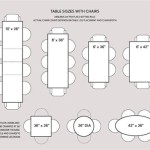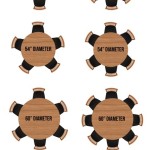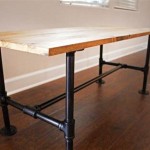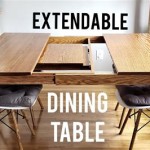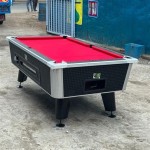```html
How Many People Fit at a 60-Inch Round Table?
Determining the appropriate number of people to seat at a 60-inch round table is a common consideration for event planners, restaurateurs, and individuals hosting gatherings. The answer is not a fixed number, as several factors influence seating capacity and comfort. These factors include the desired level of comfort, the width of the chairs used, and the table’s primary function (e.g., dining versus meeting). A thorough evaluation of these aspects is crucial for ensuring a positive and functional arrangement.
Comfort and Personal Space
The most significant factor influencing how many individuals can comfortably sit at a 60-inch round table is the degree of personal space allocated to each person. A more generous allocation of space results in a more comfortable and less crowded experience. Conversely, maximizing the number of seats often leads to a cramped and uncomfortable environment, potentially hindering conversation and movement. Industry standards typically suggest allocating between 24 and 30 inches of table space per person. This measurement refers to the arc length of the table edge assigned to each individual.
Applying this standard to a 60-inch round table requires calculating the table's circumference. The formula for circumference is C = πd, where 'C' represents the circumference, 'π' (pi) is approximately 3.14159, and 'd' is the diameter. In this case, the diameter is 60 inches. Therefore, the circumference of the table is approximately 3.14159 * 60 inches, which equals 188.5 inches.
To determine the number of people who can comfortably sit at the table with 24 inches of space per person, divide the table's circumference by the desired space per person: 188.5 inches / 24 inches/person ≈ 7.85 people. Rounding down to the nearest whole number, it is reasonable to seat 7 people comfortably. For a more spacious arrangement allocating 30 inches per person, the calculation changes to 188.5 inches / 30 inches/person ≈ 6.28 people. Rounding down again, 6 people would be the optimal number for maximum comfort.
It is important to note that these calculations provide a guideline. Practical considerations, such as the types of chairs used and the overall atmosphere desired, may necessitate adjustments.
Chair Size and Style
The physical dimensions of the chairs used directly impact the number of individuals who can comfortably fit around a 60-inch round table. Chairs with wide arms or bulky designs require more space, effectively reducing the available table space per person. Conversely, chairs with a streamlined design and minimal armrests allow for a more efficient use of space. The back of the chair is also something to consider. Some chairs have a wide back which would take up more space at the table. Before making a final decision on seating arrangements, it is advised to measure the width of the chairs at their widest point. Ideally, the chairs should fit comfortably between the table legs without causing overcrowding or impeding movement.
Consider seating arrangements where individuals can easily pull their chairs back from the table without bumping into other chairs or obstructions. This is especially important in dining settings where individuals may need to stand up frequently. The style of the event can also dictate the type of chairs necessary. For a formal event, larger, more elaborate chairs might be preferred. However, for a casual gathering, smaller, less bulky chairs may be more suitable, allowing for a greater number of guests to be seated comfortably.
The height of the chairs in relation to the table height is also a factor. The seat height must allow enough room for legs to fit under the table comfortably. Also, guests must be able to reach the table without straining. The chairs chosen must be suitable for the specific table and function.
The Table's Purpose and Function
The intended use of the 60-inch round table plays a significant role in determining the optimal seating arrangement. A table used for formal dining requires more space per person compared to a table used for a casual meeting or buffet-style meal. Formal dining typically involves multiple courses, requiring ample space for plates, silverware, glassware, and serving dishes. Consequently, providing adequate space per person is essential to avoid overcrowding and ensure a pleasant dining experience.
If the table is used for a meeting, participants may only require space for notepads, laptops, and beverages. In such cases, a slightly higher seating capacity might be acceptable, as less space is needed for individual place settings. Similarly, for buffet-style meals, the table may primarily serve as a place to rest plates while individuals are not actively eating. This scenario also allows for a slightly higher seating capacity, provided that guests have sufficient space to move around and access the buffet.
Furthermore, the presence of centerpieces or other decorative items on the table must be considered. Large centerpieces can significantly reduce the usable table space, necessitating a reduction in the number of seats. It is essential to strike a balance between aesthetics and functionality, ensuring that the table arrangement is both visually appealing and conducive to the intended activity. If the table will have a lot of center pieces or other material placed on it, then the amount of seating will have to be limited.
In addition to the primary function, the duration of the event should also be taken into account. For longer events, prioritizing comfort is crucial. If guests will be seated at the table for an extended period, providing ample space and comfortable seating will enhance their overall experience. Conversely, for shorter events, a slightly higher seating capacity may be acceptable, as guests will not be seated for prolonged periods. Also consider accessibility. If guests will need to access the table on wheelchairs, then their seating must be accommodated ahead of time.
Ultimately, determining the appropriate number of people to seat at a 60-inch round table requires a comprehensive assessment of various factors. By carefully considering comfort, chair size, and the table's intended function, event planners and hosts can create a seating arrangement that is both functional and aesthetically pleasing, ensuring a positive experience for all participants.
```
Professional Table Seating Guide The Chiavari Chair Company Is Now Chivari

60 Round Table Seat 8 To 10 Destination Events

60 In Round Table Mtb Event Als

Table Als Big Tent Events

60 Round Table Seat 8 To 10 Destination Events

60 Round Table For Orange County Ca On Call Event Als

60 In Round Table Mtb Event Als

Wedding Planning Tools Table Sizes Seating Happily Connected

Table Seating Capacity Contemporary Craftsman Furniture
6 60 Round Tables 36 Chairs

